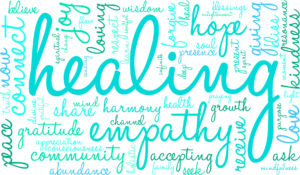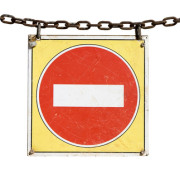
Fear is a common issue for many people. It can keep us from moving forward in our life in the ways we want to, rearing its head when we venture outside our routine. Fears can spring up after a difficult experience in our lives or they can follow us from early childhood.
From an evolutionary standpoint, one theory posits that our more fearful ancestors were more likely to survive and pass on their traits, thus leading us to be more fearful on average today. Getting past fear is an area I’ve worked on with many, many people — not to mention having plenty of opportunities to practice with myself!
In today’s post I offer a handful of tools for handling fears:
In some cases, you can alleviate the fear simply by talking to someone you trust about it. It’s often said that “fear breeds in the dark.” In other words, when you don’t examine fearful thoughts or beliefs in the bright light of day, they can intensify. What starts out as a mild aversion can become more serious if you let it go.
By talking about your fear with another person you get the chance to see, in many cases, how irrational or unlikely it really is. I’ve had the experience where even just hearing myself say it out loud made me realize how absurd it was–but until I did that I was convinced it was really something worth being frightened of.
When you are afraid, one tool that can help calm you down is a mantra that gets paired with the breath. If you find that your mind is getting carried away imagining a frightening scenario, take a breath in and say to yourself, “I am completely…” and on the exhale, “…stopping.” On the next inhale, tell yourself, “I am safe…” and with the exhale, “…and secure.” You can keep repeating this sentence until you feel a bit more calm.
Many times we spook ourselves with our thoughts. In other words, what we say to ourselves or what we imagine evokes the fear. We have this capacity because the part of our brain that is always on the look-out for potential threat can’t tell the difference between something we are imagining and something that is really happening now.
Take the time to deliberately notice your surroundings and how safe you are right now. Even though you may have been thinking about something that caused a fearful response, in fact you are probably not in danger in this moment.
Fear can also become a conditioned response. If you were in a frightening situation once, going back to the location or seeing the people involved in that particular event can evoke the same emotions, even though nothing bad is happening now. This conditioned response can be interrupted by stopping to relax, using the breathing mantra described above, and taking note of the elements that are different now from the initial event. It usually takes some repetition with interrupting the fear response for it to go away.
If you know you’re going into a situation that scares you, like talking in front of a group or meeting with a doctor to hear the results of a medical test, it can help to take a moment before going into the situation. Bring to mind the people who love you. Imagine their faces in front of you. Let yourself feel their love for you, and your love for them. This can reassure you and give you courage to do the things that scare you.
When you have something like a big project or a big life change that you know you want but it brings up fear for you, one of the things that can help is to break it down into baby steps. Focus on just the *very next step.* In some cases, this might look like focusing on just what you are doing today, or even just for the next hour, without letting your mind get caught up in thinking about the full scope of a project or life change.
These are just a few of the techniques I’ve found work for people when they want relief from a fear or to muster the courage to do something.
There are times a different kind of approach is helpful. For example, if you know you picked up a fear from one of your parents, teachers, or other significant person in your life then doing some work to separate your thoughts and feelings from theirs can be freeing.
Similarly, you may be carrying a fear that has been passed down not just by a parent but along a whole family line. You may have been be born into a family agreement that says, “we don’t do this kind of thing because bad things will come of it.” There can be great power in ending or renegotiating this agreement with our ancestors.
I hope that you will try one or more of these tools for yourself. I think you’ll find them useful–I know I have.
With love,
Susan
 There are times when a situation comes up in our lives that we have a hard time reconciling. It could be a comment someone made to us that gets under our skin, when something that happens that we don’t know how to accept, or when someone else’s behavior (or even our own) doesn’t match our expectations.
There are times when a situation comes up in our lives that we have a hard time reconciling. It could be a comment someone made to us that gets under our skin, when something that happens that we don’t know how to accept, or when someone else’s behavior (or even our own) doesn’t match our expectations. When you change the way you tell your story it opens the door for the story, and therefore the thoughts and feelings that go with it, to shift.
When you change the way you tell your story it opens the door for the story, and therefore the thoughts and feelings that go with it, to shift.

 What’s the single most important thing you can do to heal?
What’s the single most important thing you can do to heal? When we are guarding ourselves, we are essentially saying “no.” No, I won’t move; no, this isn’t really happening; no, I won’t forgive or forget; no, I won’t let this go because I don’t want anything like it to ever happen again.
When we are guarding ourselves, we are essentially saying “no.” No, I won’t move; no, this isn’t really happening; no, I won’t forgive or forget; no, I won’t let this go because I don’t want anything like it to ever happen again. Fear is a common issue for many people. It can keep us from moving forward in our life in the ways we want to, rearing its head when we venture outside our routine. Fears can spring up after a difficult experience in our lives or they can follow us from early childhood.
Fear is a common issue for many people. It can keep us from moving forward in our life in the ways we want to, rearing its head when we venture outside our routine. Fears can spring up after a difficult experience in our lives or they can follow us from early childhood.






